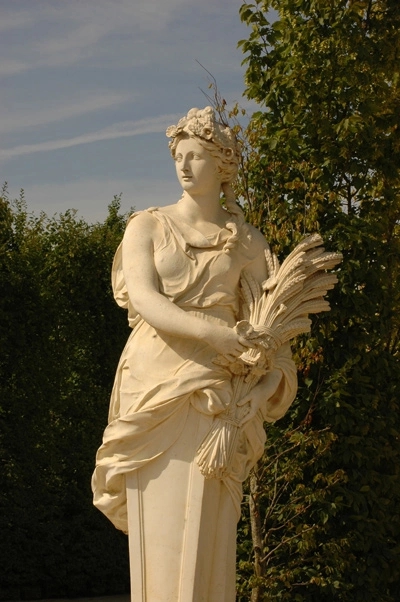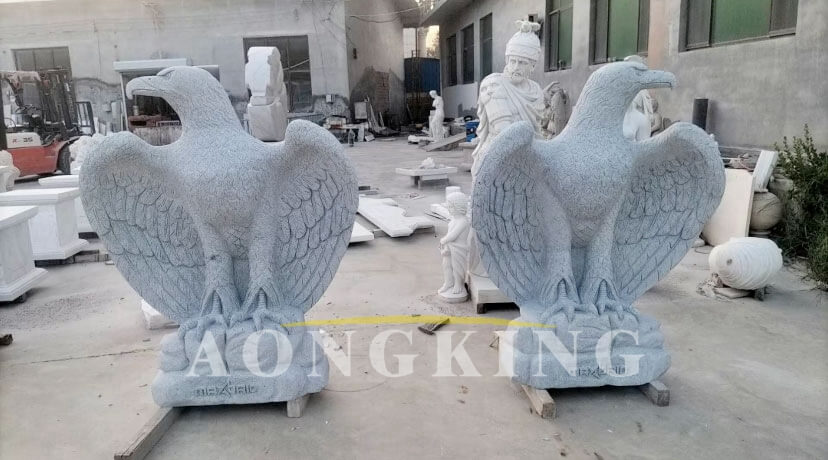Project Description
Garden famous Roman goddess marble Ceres statue
The combination of natural environment and sculptures is really beautiful. This Ceres statue standing in the garden is carved from marble. Ceres statue shows the goddess ceres of agriculture in Rome. This ornament is also a pillar design. The lower body of the goddess is connected with a square stone pillar, and the beautiful skirt of the upper body is carved with elegance and detail. She turned her head to the side, and her charming face was carved very three-dimensionally. Ceres statue held a flower in her right hand and a bunch of wheat ears in her left arm, highlighting her responsibilities.
| NO.: | AK-stone(CC149 ) |
| MATERIAL: | Natural Marble / Stone / Granite |
| SIZE: | LIFESIZE / CUSTOM MADE SIZE |
| USAGE: | Amusement park, Theme park, Garden, Restaurant, Playground, Public Area, Garden, Indoor & Outdoor, etc |
Ceres Statue’s role in the human world:
Ceres statue was the Roman goddess of agriculture, grain and the mother’s love for her child. She was the daughter of Saturn and Opus, sister of Jupiter, and mother of Protherpine. Ceres was a benevolent goddess to the Romans, and they had a common expression, “befitting Ceres,” which means brilliant. Ceres statue is beloved for human service, giving them gifts of harvest, and reward for soil cultivation. Ceres, also known as The Greek goddess Demeter, is the goddess of harvest and is credited with teaching humans how to plant, preserve and prepare grain and corn. She was held responsible for the fertility of the land. Ceres Statue is the only god involved in the daily lives of ordinary people. While others occasionally “dabb” in human affairs when it suits their personal interests, or help their preferred “special” mortals, Ceres is indeed the nurturer of humanity. Ceres statue marble art also meticulously sculpted her image.

Ceres statue (2)

Ceres statue (3)
About the changing seasons behind Ceres Statue:
The Romans explained the change of seasons with the following story: Ceres Statue was Jupiter’s sister and Prosopena was their daughter. Proserpine was kidnapped by Pluto, the god of the underworld, to become his bride. When Ceres followed her daughter, she had already entered earth. To make matters worse, Ceres learns that Pluto has been approved by Jupiter to be his daughter’s husband. Ceres Statue is so enraged that she disguises herself as an old woman, goes to live in the man’s world and stops all plants and crops from growing, causing a famine. Jupiter and the other gods tried to make her change her mind, but she was stubborn. Jupiter finally realizes he must bring Proserpine back from the underworld and sends someone to find her. Unfortunately, Hades had secretly given her food before he left, and once she had eaten in the underworld, she couldn’t leave forever. As a result, Proserpine was forced to return to the underworld for four months each year. She comes out in the spring and spends the fall with Ceres Statue, but has to return to the underworld in the winter. She’s separated from Ceres every fall, which is why plants shed their leaves, seeds lie dormant underground, and nothing grows until spring, when Protherpina is reunited with her mother.

Sculpture marble (1)



Ask us for price and solutions today!
Your inquiry will be replied to within 24 hours, and we respect your privacy.























